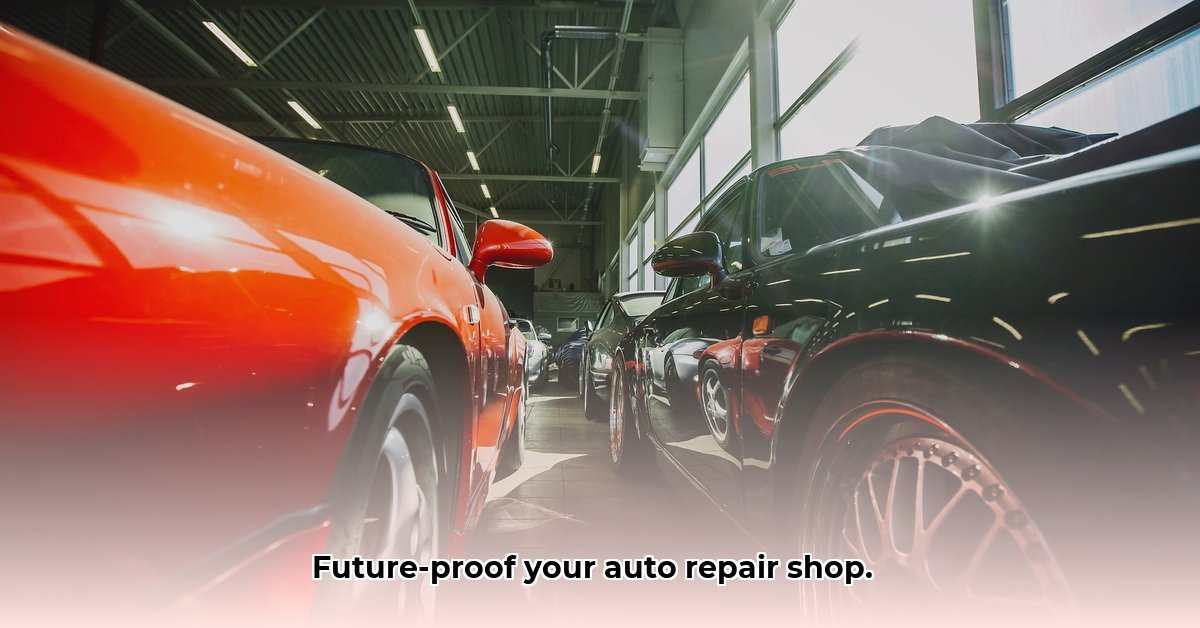
The automotive landscape is transforming rapidly. Electric vehicles (EVs) and advanced driver-assistance systems (ADAS) are no longer niche technologies; they're reshaping the auto repair industry. Are you prepared? This guide provides actionable steps to future-proof Fuentes Motors Inc. and ensure continued success.
Mastering the EV Revolution: Charging into the Future
The rise of electric vehicles presents both challenges and opportunities. Ignoring this shift is risky; embracing it is crucial for long-term viability. EV repair differs significantly from traditional internal combustion engine (ICE) repair, demanding specialized knowledge and tools.
Step 1: Invest in Certified EV Repair Training. This isn't optional; it's essential. Prioritize training programs covering high-voltage safety protocols, battery system diagnostics, and electric motor repair. Consider manufacturer-specific training for in-depth expertise. Does your team have the necessary certifications to safely handle high-voltage systems? (High-voltage systems can pose a serious risk to untrained personnel.)
Step 2: Acquire Specialized EV Diagnostic Equipment. Your existing tools won't suffice. Invest in diagnostic scanners and equipment specifically designed for EVs. This includes high-voltage safety gear to protect your mechanics. Is your shop equipped to handle the unique diagnostic needs of electric vehicles? (Specialized tools often provide faster and more accurate diagnoses.)
Step 3: Embrace Continuous Learning. EV technology evolves constantly. Regularly update your team's knowledge through workshops, online courses, and industry conferences. Establish a continuous learning program to ensure your team maintains the knowledge needed for high performance. What strategies are you employing for continuous skill development? (Continuous learning is essential in the rapidly changing world of EV technology.)
Navigating the ADAS Landscape: Smart Cars, Smart Strategies
Advanced driver-assistance systems (ADAS) are increasingly common, significantly impacting repair procedures. ADAS repair requires specialized knowledge and advanced diagnostic tools. Improper repair can compromise safety, highlighting the need for expert training and equipment.
Step 1: Master ADAS Calibration Procedures. Many ADAS components require precise recalibration following repairs. Ensure your technicians receive thorough training in these procedures. Is your team fully trained on the precise calibration requirements of ADAS systems? (Improper calibration can lead to system malfunction and potential safety hazards.)
Step 2: Invest in Advanced ADAS Diagnostic Equipment. Diagnosing ADAS problems demands specialized scanners and software. Accurate diagnoses are crucial for safe and effective repairs. What diagnostic tools are you currently using for ADAS repairs? (High-quality diagnostics are vital for efficient and safe ADAS repairs.)
Step 3: Stay Updated on ADAS Technology. Subscribe to industry publications, attend conferences, and participate in online forums to stay abreast of the latest developments and best practices. How does your shop stay up-to-date with evolving ADAS technologies? (The rapid advancements in ADAS require ongoing learning and adaptation.)
Elevating Customer Service: The Human Touch Remains Crucial
Customer experience is paramount. In today's market, excellent customer service differentiates successful shops.
Step 1: Prioritize Clear and Frequent Communication. Keep customers informed throughout the entire repair process, using plain language and avoiding technical jargon. Regular updates build trust and loyalty. How will you enhance communication with your customers to improve their experience? (Proactive and clear communication significantly affects customer satisfaction.)
Step 2: Streamline Your Shop's Workflow. Optimize your scheduling and workflow to minimize wait times and ensure efficient service. Are you maximizing your shop's operational efficiency? (Efficient workflow is critical for timely service and improved customer satisfaction.)
Step 3: Build Strong, Lasting Customer Relationships. Respond promptly to inquiries, address issues effectively, and build relationships based on trust and mutual respect. Gather customer feedback regularly to continually improve service. What specific steps are you taking to measure and improve customer satisfaction? (Customer feedback is essential for continuous improvement and building a strong customer base.)
Strategic Planning for Long-Term Success: Charting Your Course
Adapting to the evolving automotive landscape requires a strategic long-term vision. The following table outlines key actions for various stakeholders:
| Stakeholder Group | Short-Term Actions | Long-Term Vision |
|---|---|---|
| Fuentes Motors Inc. | Invest in EV and ADAS training; acquire essential tools. | Explore strategic partnerships; develop specialized services (e.g., EV battery replacement or ADAS recalibration). |
| Mechanics | Obtain EV and ADAS certifications; continuous upskilling. | Become specialized experts in niche areas; lifelong learning. |
| Customers | Offer transparent pricing and exceptional communication. | Develop loyalty programs; focus on building lasting relationships. |
The future of automotive repair is bright for shops that adapt and innovate. Embrace the changes, invest wisely, and prioritize your team's development. The automotive industry is transforming, and proactive adaptation is key to securing your shop's continued success. The right investments today secure a prosperous future.